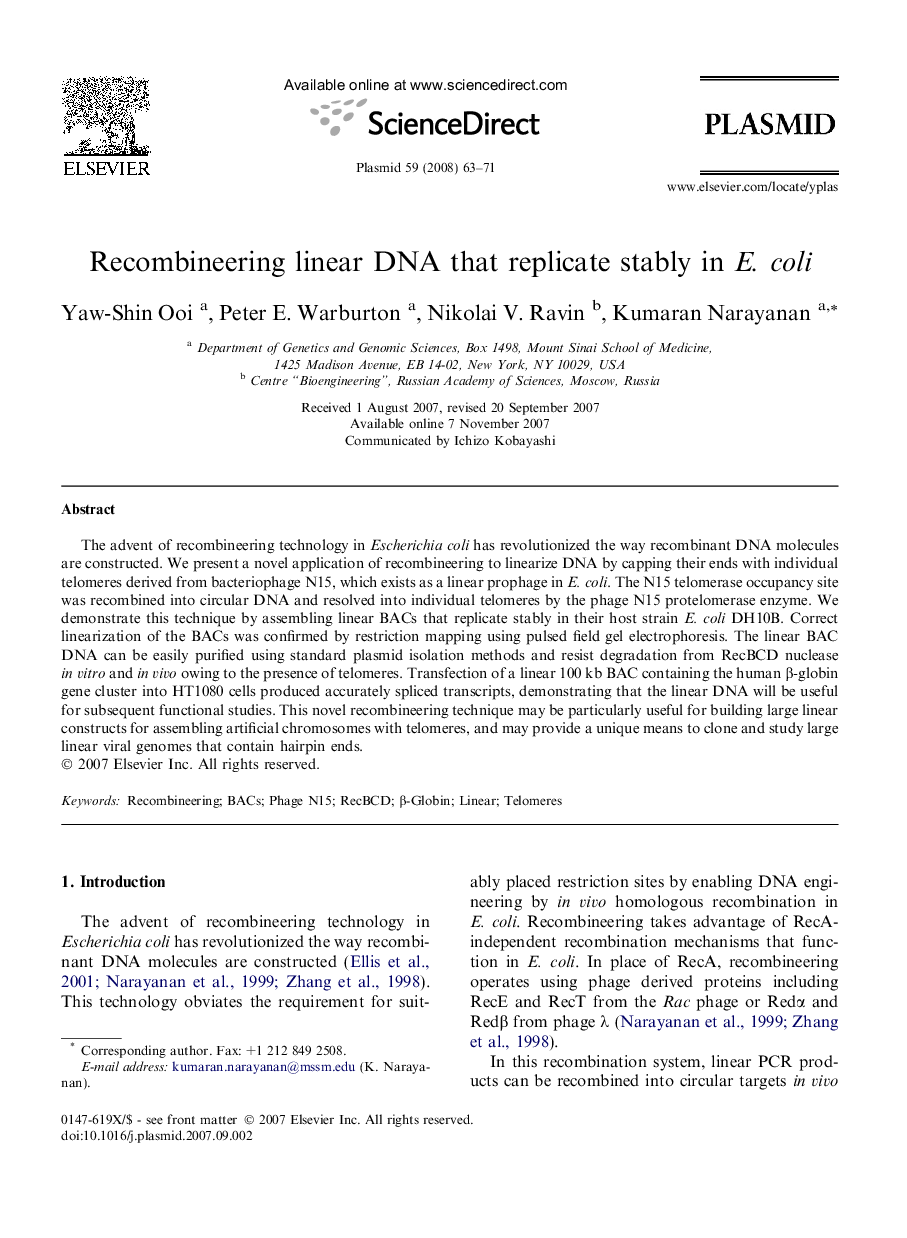| Article ID | Journal | Published Year | Pages | File Type |
|---|---|---|---|---|
| 2824518 | Plasmid | 2008 | 9 Pages |
The advent of recombineering technology in Escherichia coli has revolutionized the way recombinant DNA molecules are constructed. We present a novel application of recombineering to linearize DNA by capping their ends with individual telomeres derived from bacteriophage N15, which exists as a linear prophage in E. coli. The N15 telomerase occupancy site was recombined into circular DNA and resolved into individual telomeres by the phage N15 protelomerase enzyme. We demonstrate this technique by assembling linear BACs that replicate stably in their host strain E. coli DH10B. Correct linearization of the BACs was confirmed by restriction mapping using pulsed field gel electrophoresis. The linear BAC DNA can be easily purified using standard plasmid isolation methods and resist degradation from RecBCD nuclease in vitro and in vivo owing to the presence of telomeres. Transfection of a linear 100 kb BAC containing the human β-globin gene cluster into HT1080 cells produced accurately spliced transcripts, demonstrating that the linear DNA will be useful for subsequent functional studies. This novel recombineering technique may be particularly useful for building large linear constructs for assembling artificial chromosomes with telomeres, and may provide a unique means to clone and study large linear viral genomes that contain hairpin ends.
